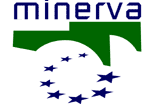
|
|
|
|
|
|
|
|
|
 |
Path: Home » Publications » Handbook on cultural web user interaction »
Table of contents » Chapter 3 » Chapter 3.1
|
| |
Handbook on cultural web user interaction
|
3.1 A self-evaluation questionnaire for planning a user-centred web applicationThis handbook is based on a concept that has been often been asserted by MINERVA: the quality of a cultural project relies on decisions that must be taken from the earliest stages of the project. This also applies to interaction and user satisfaction, which is a central goal of any high quality web application. This questionnaire, that to some extent returns to the check-points of the Handbook of quality principles but for the most part is based on the contents of the manual that you are reading, is addressed to those cultural entities that are about to develop a new web application (or want to update one already on-line) and whose objective is to seriously evaluate user expectations, user satisfaction and the potential of advanced user interaction. It is suggested that the questionnaire is used not only in the initial stages of the project, but also in the subsequent phases, including that of maintenance of the on-line application. The first two parts (GENERAL INFORMATION and APPLICATION QUALITY AND USERS) aim to assist the web application designer in evaluating if and to what extent key (strategic, technical, legal and organizational) questions are being considered; such questions will have an impact on the use of the application. The questions are organized under sub-titles that follow a precise path of self-evaluation, within which the questions are arranged in a deliberate order. On the other hand, in the subsequent parts of the questionnaire, different options are suggested to the entity carrying out the self-evaluation. These are taken from the material presented in chapters 2.4 - 2.6 of this handbook, in no particular order. Finally, the fifth part of the questionnaire (AUDIENCE MEASUREMENT) presents techniques to measure the use of the application and subsequent user satisfaction (see 2.6). |
|
|
|
|
Copyright Minerva Project 2008-09,
last revision 2008-09-19, edited by Minerva
Editorial Board. | |